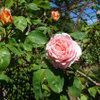Peat moss, alfalfa hay, alfalfa pellets, or alfalfa meal?
strawchicago z5
11 years ago
Related Stories

GARDENING GUIDESGardening Solutions for Heavy Clay Soils
What’s a gardener to do with soil that’s easily compacted and has poor drainage? Find out here
Full Story
GARDENING GUIDESThe Poop Scoop: Enrich Your Soil With Good Old Manure
Get over the ick factor already — this natural super-ingredient for soil has so many benefits, you'll wonder why you ever went chemical
Full Story
GARDENING GUIDESHow to Switch to an Organic Landscape Plan
Ditch the chemicals for a naturally beautiful lawn and garden, using living fertilizers and other nontoxic treatments
Full Story
GARDENING GUIDESHow to Fix Bare and Yellow Lawn Spots
Restore your turf’s good looks by reseeding unsightly patches
Full Story









subk3
ogrose_tx
Related Professionals
Oconomowoc Landscape Architects & Landscape Designers · Southfield Landscape Architects & Landscape Designers · Belmont Landscape Contractors · Del Aire Landscape Contractors · New Berlin Landscape Contractors · Pleasant Hill Landscape Contractors · Vallejo Landscape Contractors · Wallingford Landscape Contractors · Wayland Landscape Contractors · Goodlettsville Swimming Pool Builders · West Hollywood Swimming Pool Builders · Fairfax Siding & Exteriors · Lombard Siding & Exteriors · Milford Siding & Exteriors · Saco Siding & Exteriorsjerijen
ingrid_vc so. CA zone 9
strawchicago z5Original Author
rosefolly
rosefolly
Kippy
strawchicago z5Original Author
subk3
floridarosez9 Morgan
subk3
strawchicago z5Original Author
strawchicago z5Original Author
Kippy
Kippy
strawchicago z5Original Author
Kippy
strawchicago z5Original Author
darrell-mg
austinashley
harmonyp
strawchicago z5Original Author
strawchicago z5Original Author
Kippy
strawchicago z5Original Author
AquaEyes 7a NJ
strawchicago z5Original Author
Kippy
jerijen
Kippy
strawchicago z5Original Author
strawchicago z5Original Author
kittymoonbeam
jeannie2009
harmonyp
strawchicago z5Original Author
strawchicago z5Original Author